An unseasonably cold month of May indeed, but the vineyard gets another notch on the epaulette for steadfastness. No hail, no frost. Sunshine after each shower, cool winds to dry things up. (A pound of salt going over my left shoulder as I write.) This is our lucky micro-climate. 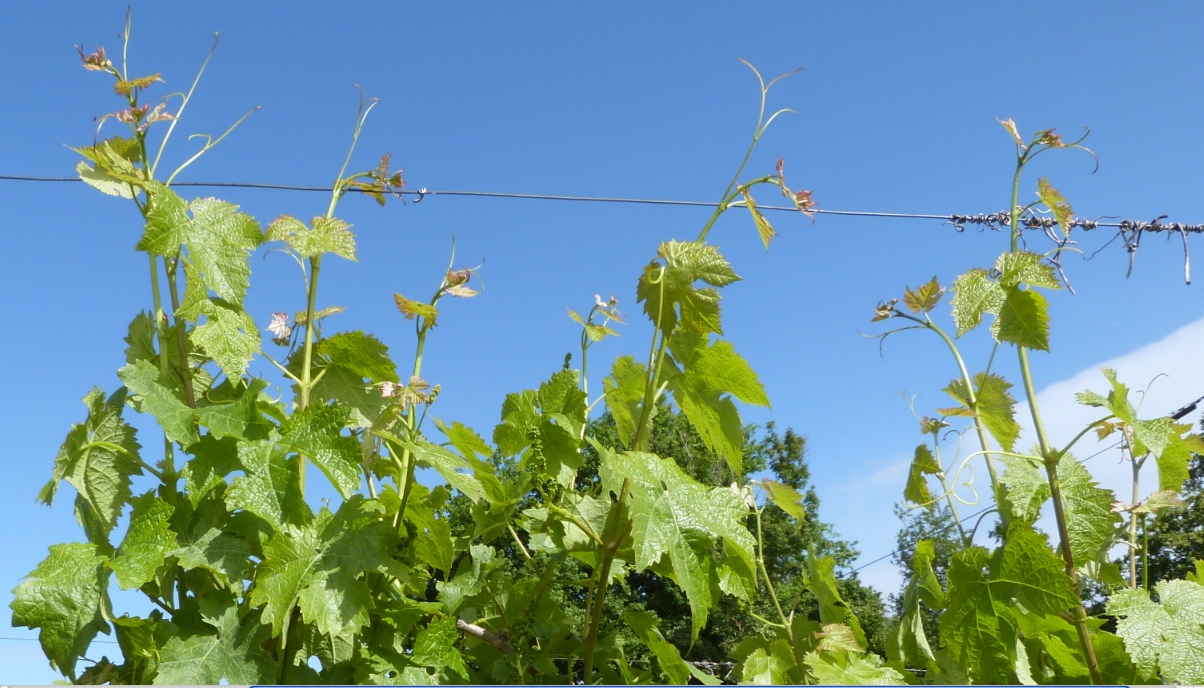
The vines are shooting up fast and bunches of would-be grapes have formed. Signs of potential over-abundance, so now we walk the parcels for spring pruning. Most of the work is manual and slow. Our goal is to remove anything that distracts the plant from correctly nourishing the grapes we intend to keep.
That’s right – that we intend to keep. We are obliged by our appellation AOC Bordeaux Superiéur to harvest a lower yield of grapes per hectare than an AOC Bordeaux. The principle is that fewer grapes per plant mean less competition for nutrients. Remaining grapes are riper, and more uniformly ripe and there is less risk of disease. The flavors, color and bouquet are more concentrated, better reflecting the characteristics of the terroir. All this, to help us create a higher quality wine.
This spring pruning is called “vendange verte” referring to the removal of parts of the plant while the grapes are still green and pubescent: unnecessary leaves, buds that will not produce fruit, redundant shoots (“gourmands” which here means “greedy and useless.”)
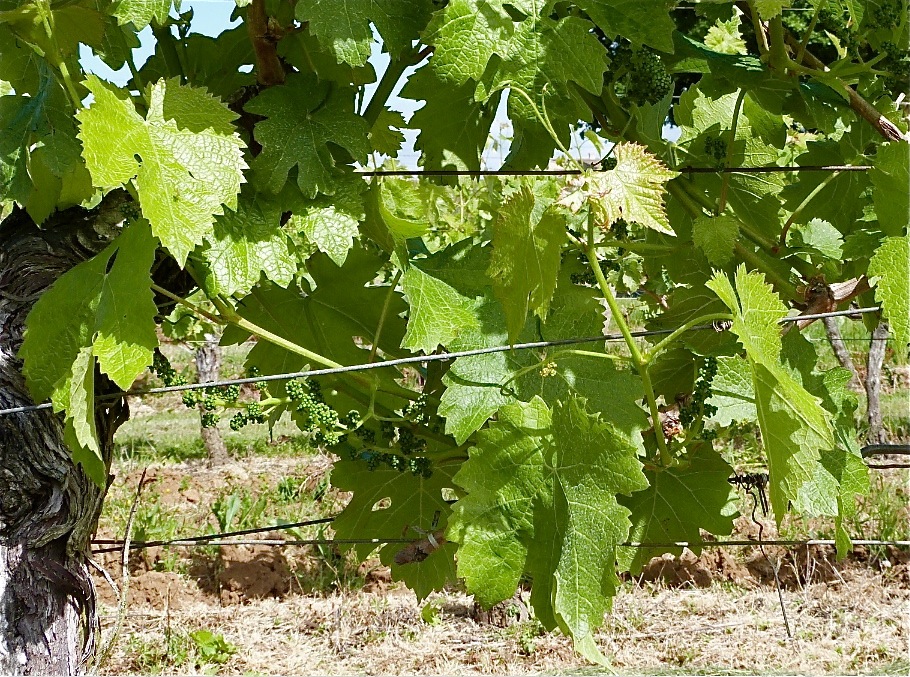
Our work is to prevent bunching among the clusters of grapes and an overly dense canopy of leaves. The grapes need proper air circulation to avoid mildiou and rot, so we prune judiciously to make sure the remaining clusters are not compacted against each other. Trimming foliage, we leave enough leaves for photosynthesis, but not too much. This permits the correct exposure to sunlight for thorough and even ripening.
“Épamprage” is the removal of whiskers on the legs and near the crown. We do this mostly by hand, although for a few parcels Denis uses a nifty device with soft plastic bands that spin around to remove the shoots at the base.
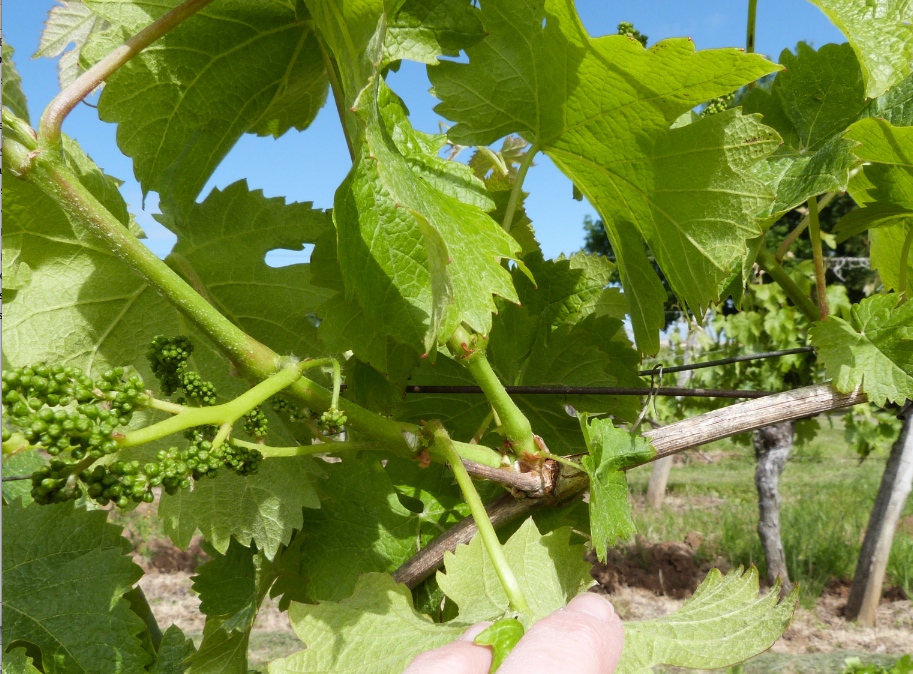
My personal favorite is “dédoublage” which allows me to walk the rows in peaceful silence, examining each cordon for places where a bud has sprung a twin, the “double.” I choose the twin that has a straighter posture, healthier form and more advantageous position, and snap off the other. Sort of viticulture apoptosis – allowing only one to live, in pursuit of the greater good of the whole.
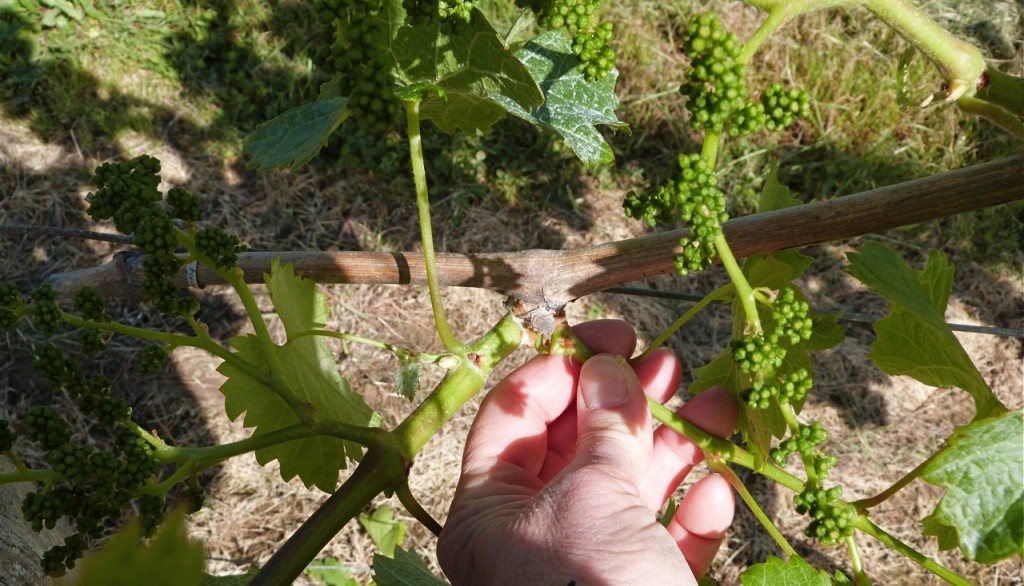
Snapping off just one cane will allow its double to receive more sun, air and nutrients. Multiply that by several hectares and we’ll have a lower yield at harvest, but the grapes themselves will be riper, with more concentrated flavor. There are formulas that calculate the weight of each cluster times the number of clusters per plant, to tell you the optimal tonnage per hectare. But I prefer to use my eye and imagine where this wildly clamoring child-plant will need some light and air as an August adult.
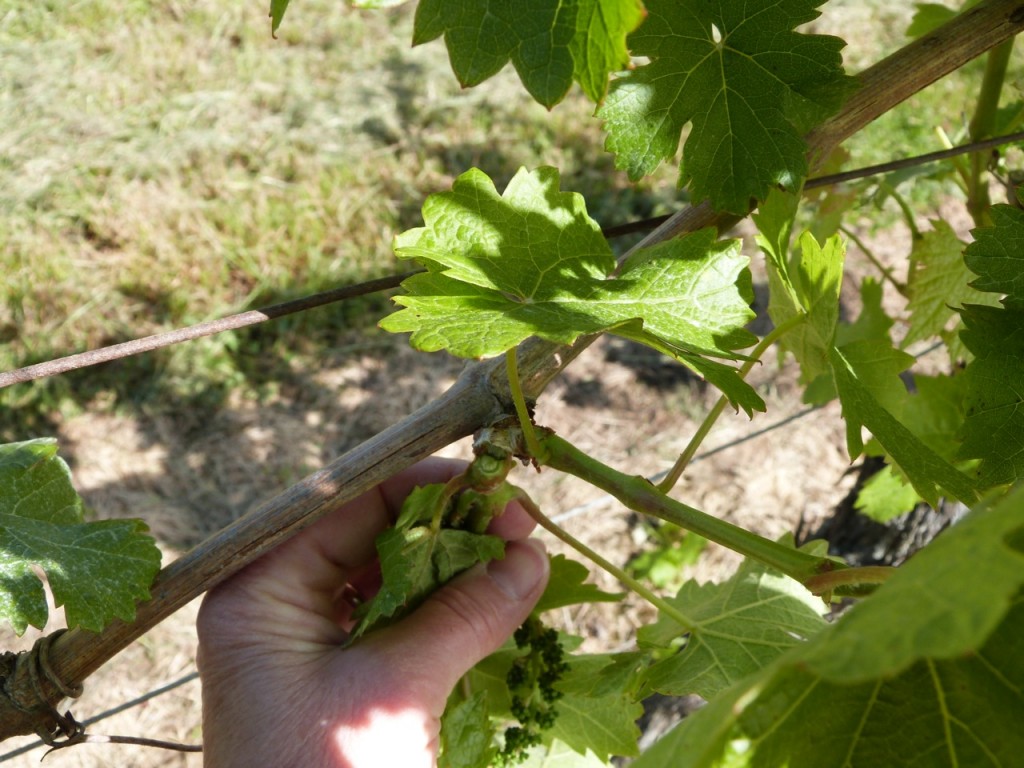
Our friend Norbert of Chateau Rouquette says that spring pruning is one of the ways you make your wine unique; you shape it to reflect your own signature. “Un vin qui vous ressemble.” He held up an embryonic bunch of grapes like a mirror in front of John and winked: “bien sur, il vous faut un vin vif, complexe, savoureux et concentré. De caractère.” 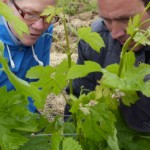
If stubborn could be used as an adjective for wine, I’d throw that in too.
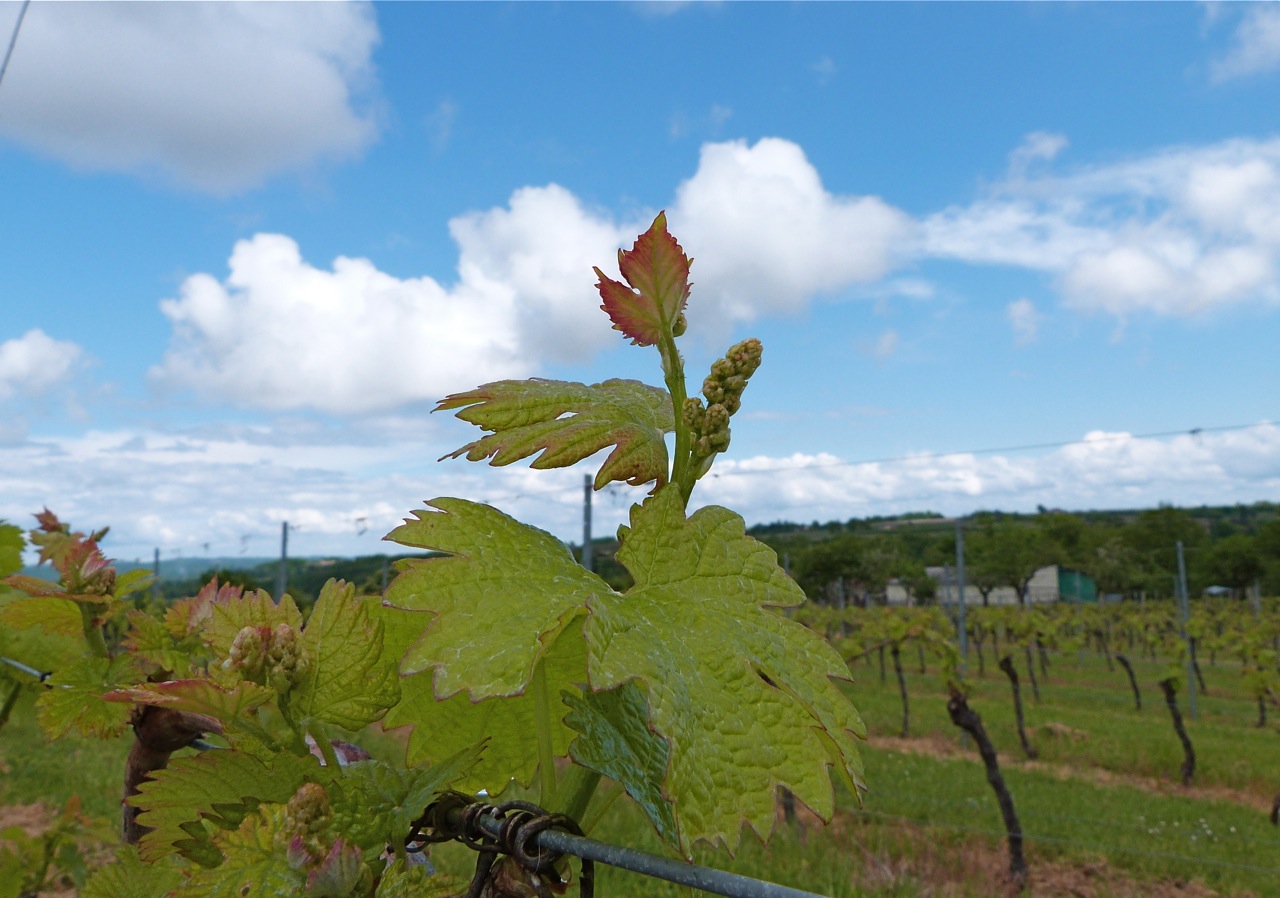

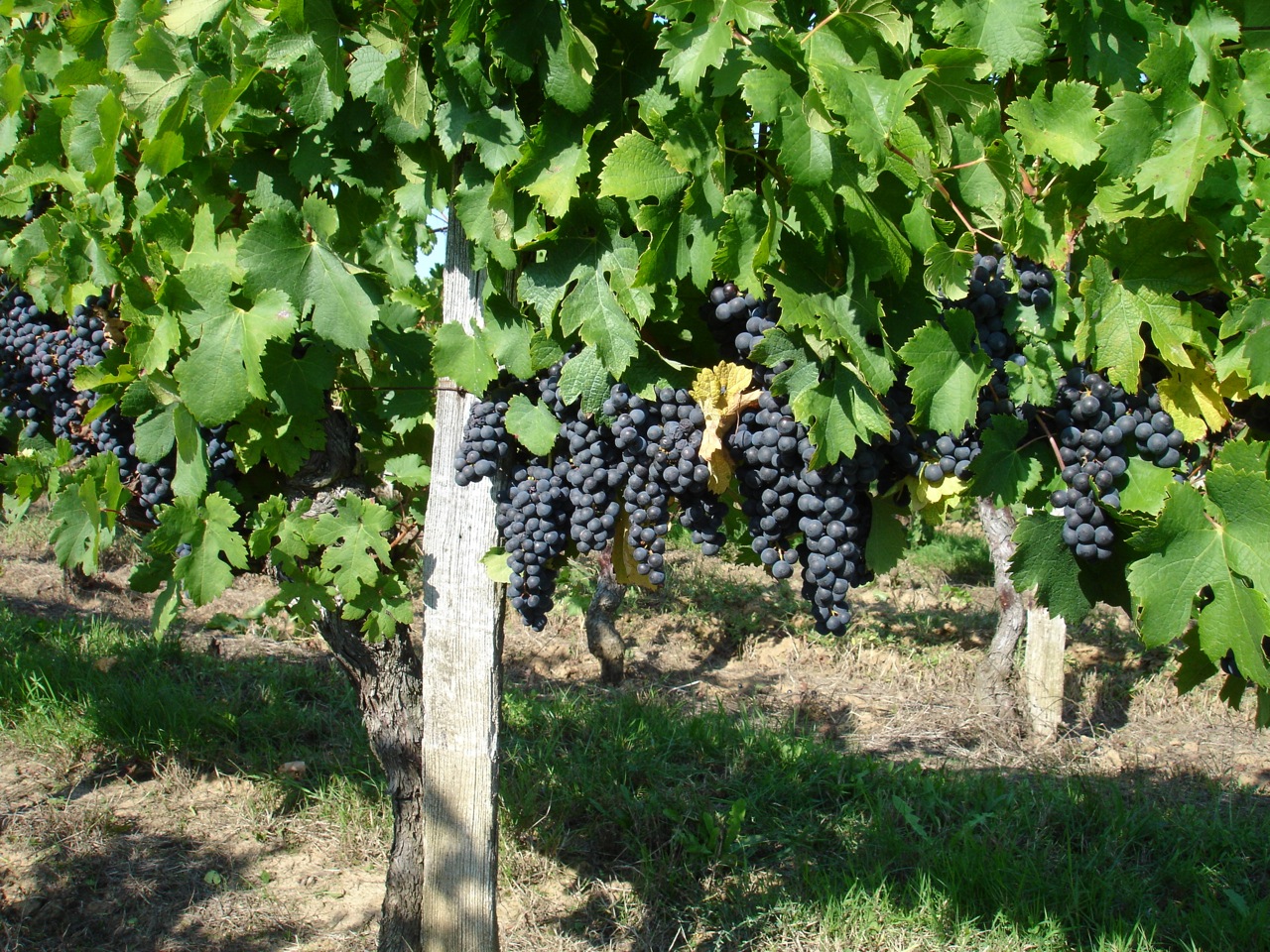
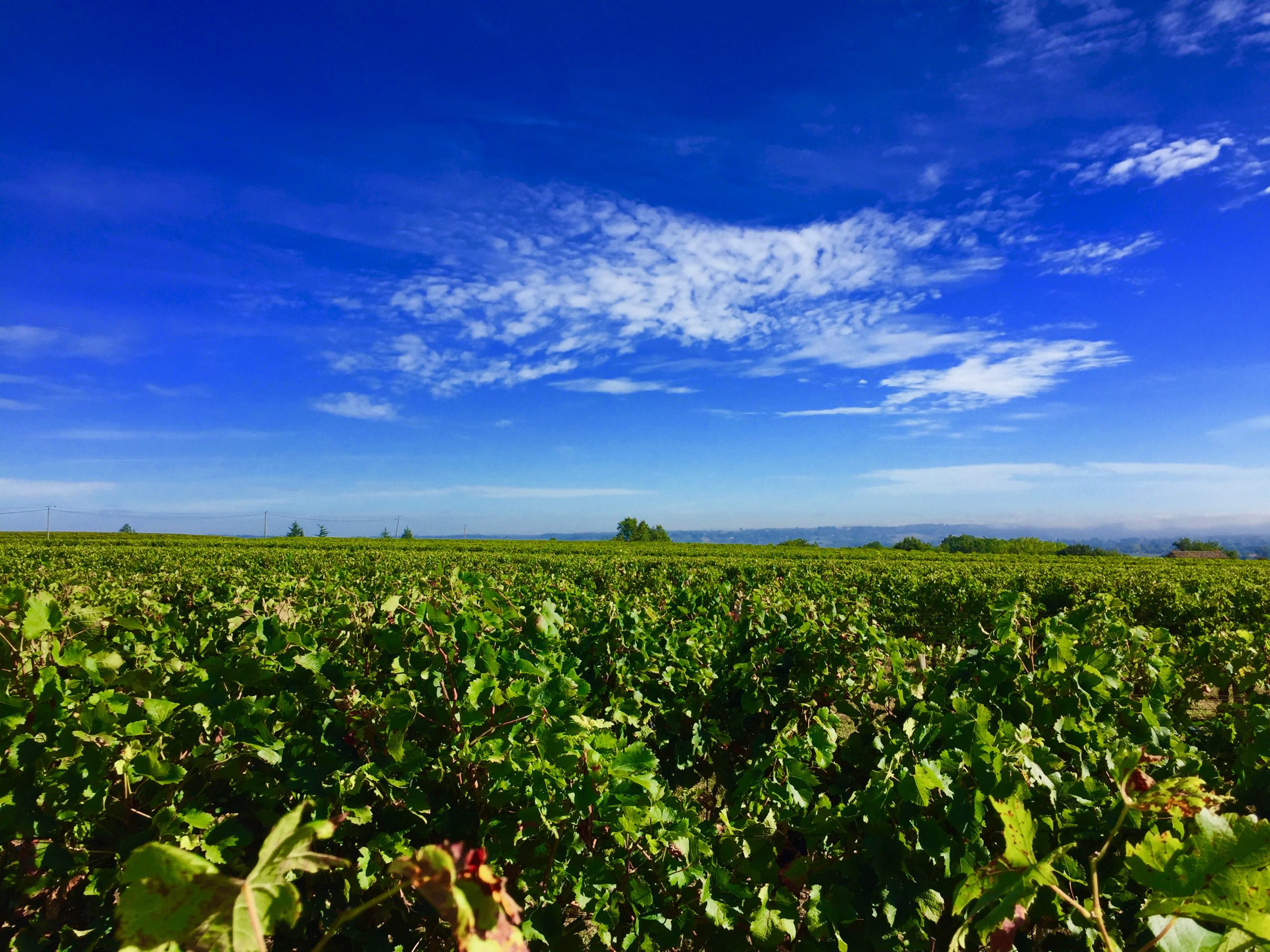

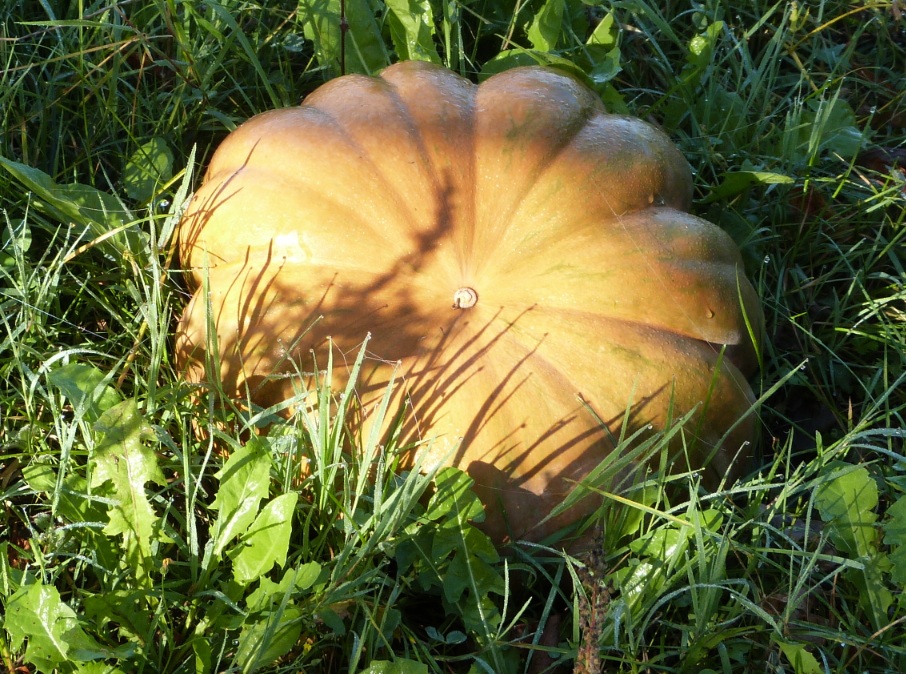
2 thoughts on “Spring Pruning for “Un Vin de Caractère””
Mary, this is amazing. And wouldn’t it be nice if we could figure out a way to “dedoubler” our lives?
And that idea about the wine as a mirror of the character! Brilliant.
When is this going to the publisher? THE SEASONS OF LA TOURBEILLE???